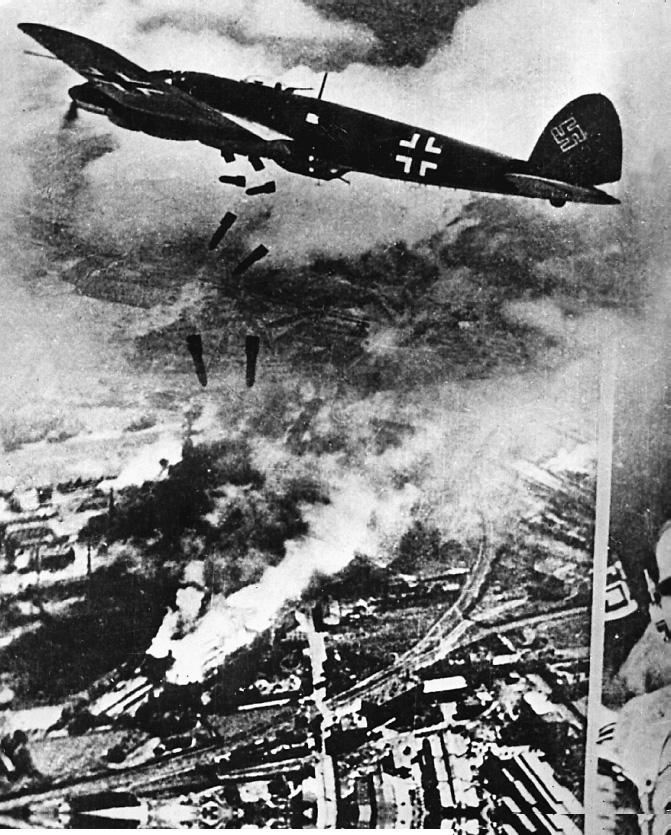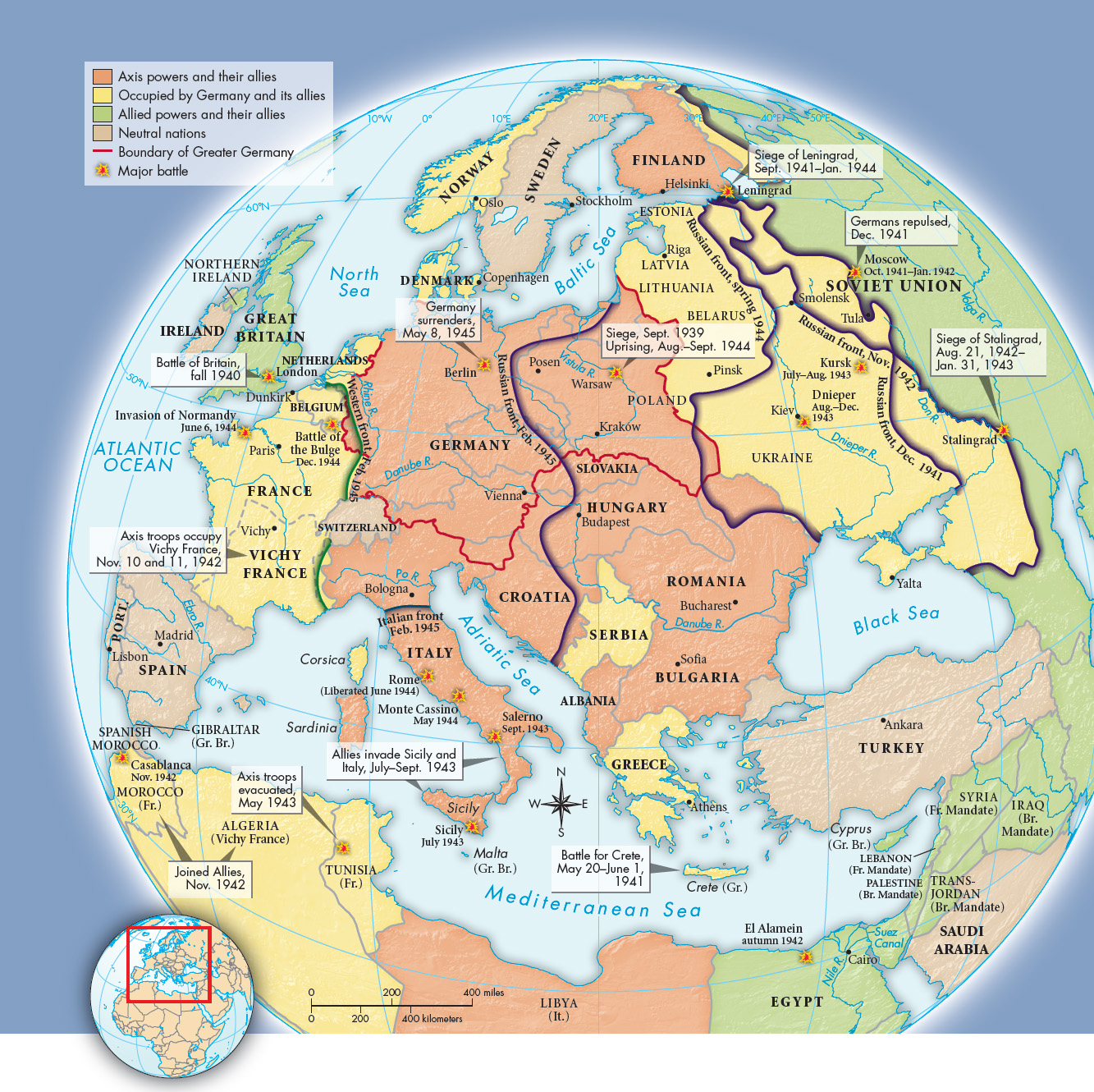German Victories in Europe

Using planes, tanks, and trucks in the first example of a blitzkrieg, or “lightning war,” Hitler’s armies crushed Poland in four weeks. While the Soviet Union quickly took its part of the booty — the eastern half of Poland and the independent Baltic states of Lithuania, Estonia, and Latvia — French and British armies prepared their defenses in the west.
In spring 1940 the Nazi lightning war struck again. After occupying Denmark, Norway, and Holland, German motorized columns broke into France through southern Belgium, split the Franco-British forces, and trapped the entire British army on the French beaches of Dunkirk. By heroic efforts, the British withdrew their troops — although equipment could not be saved. Soon after, France was taken by the Nazis. By July 1940 Hitler ruled practically all of continental Europe. Italy was a German ally; Romania, Hungary, and Bulgaria joined the Axis powers; and the Soviet Union, Spain, and Sweden were friendly neutrals. Only the Balkans and Britain, the nation led by the uncompromising Winston Churchill (1874–1965), remained unconquered.
To prepare for an amphibious invasion of Britain, Germany sought to gain control of the air. In the Battle of Britain, which began in July 1940, up to a thousand German planes a day attacked British airfields and key factories, dueling with British defenders high in the skies. Losses were heavy on both sides. In September 1940 Hitler angrily turned from military objectives to indiscriminate bombing of British cities in an attempt to break British morale. British aircraft factories increased production, and the heavily bombed people of London defiantly dug in. By October Britain was beating Germany three to one in the air war, and the Battle of Britain was over. (See “Primary Source 27.5: Everyday Life in the London Blitz.”) Stymied there, the Nazi war machine invaded and occupied Greece and the Balkans.
Hitler now allowed his lifetime obsession of creating a vast eastern European empire ruled by the master race to dictate policy. In June 1941 he broke his pact with Stalin and launched German armies into the Soviet Union along a vast front (Map 27.3). By October most of Ukraine had been conquered, Leningrad was practically surrounded, and Moscow was besieged. But the Soviets did not collapse, and when a severe winter struck German armies outfitted only in summer uniforms, the invaders were stopped. Nevertheless, Hitler and his allies ruled over a vast European empire stretching from eastern Europe to the English Channel. Hitler, the Nazi leadership, and the loyal German army were positioned to greatly accelerate construction of their so-called New Order in Europe.
MAPPING THE PAST

ANALYZING THE MAP What was the first country conquered by Hitler (see Map 27.2)? Locate Germany’s advance and retreat on the Russian front in December 1941, November 1942, spring 1944, and February 1945. How does this compare to the position of British and American forces on the battlefield at similar points in time?
CONNECTIONS What implications might the battle lines on February 1945 have had for the postwar settlement in Europe?